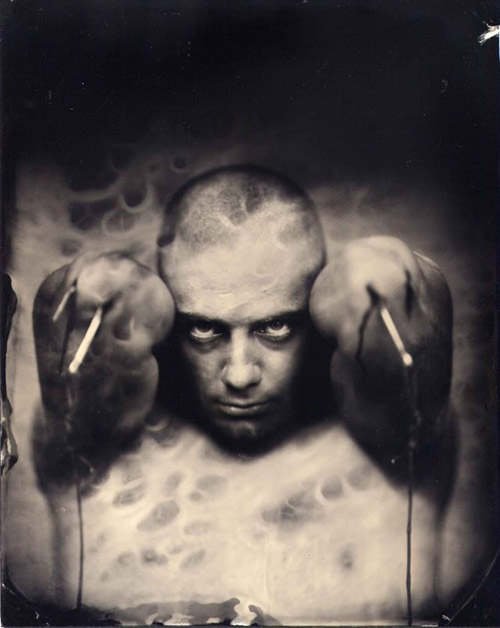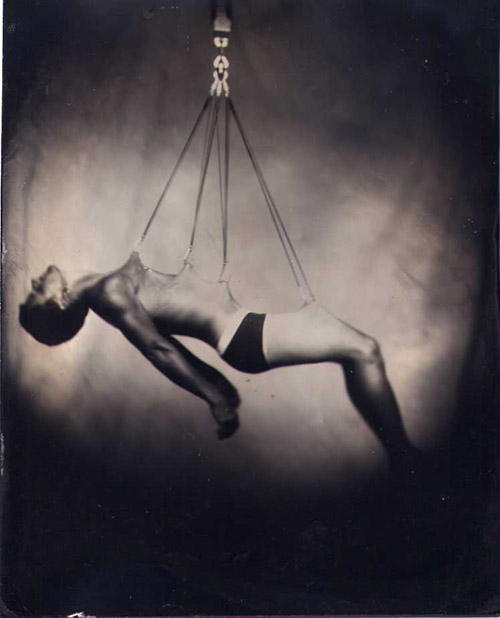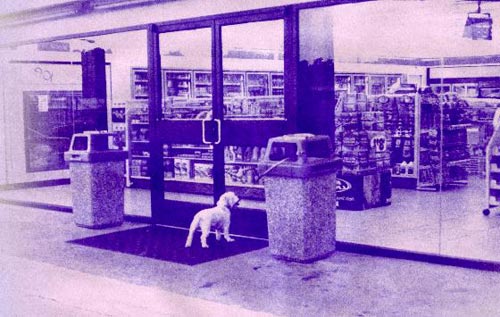
Photographer Matt Larkin is working on a book of wet plate collodion ambrotypes documenting people doing ritual body suspension. While some may find the subject matter challenging, I find the photography incredibly compelling—it captures both the intensity and the peace that I’ve heard can come from the suspension experience.
You can see more of Larkin’s wet plate photographs in his gallery at AlternativePhotography.com.

Photos © copyright 2007 Black Barn Editions. Used with permission.
UPDATE: The book is out, I’ve posted a review and ordering information here.
